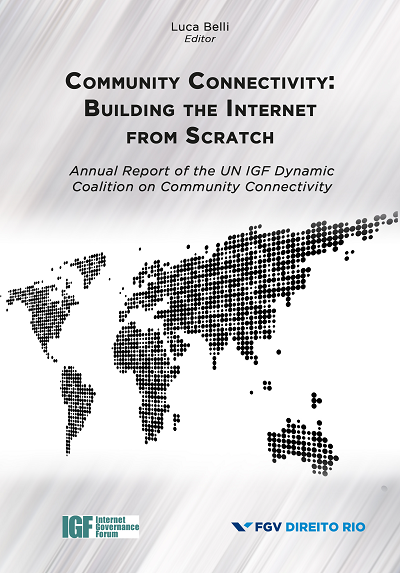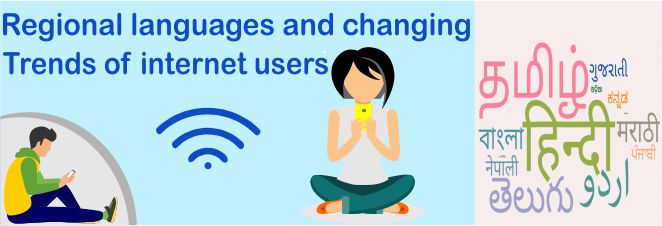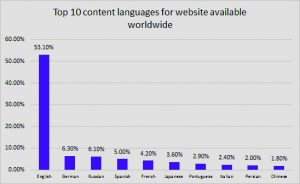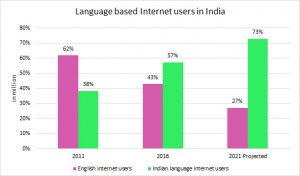The paper is a continuous effort of Digital Empowerment Foundation’s (DEF) comprehensive research to understand the social and psychological impact of network shutdowns (including Internet/data and SMS) on the lives of people. This paper documents on-ground stories and experiences to build a strong and effective case against network shutdowns, with specific focus on the social and psychological impact. The paper has analysed media reports of shutdowns (till August 2017) and conducted interviews in the affected areas of Haryana and Jammu and Kashmir to find the inter-link between Internet shutdowns and their impact on the socio-cultural-economic well-being of citizens.
Mobile phone: A public Tool
The study, ‘Mobiles for Social and Behaviour Change analyses 14 mobile-based interventions into three broad categories – health, education, and civic participation. It further understands how mobile can be used as a communication tool for improving frontline workers lives.
Community Networks: Regulatory Issues and Gaps in India
This paper reflects views and opinions of community network providers who are trying to build their own low-cost and effective infrastructure for providing Internet connectivity. This document is part of a series of policy briefing papers, a collaborative effort between DEF & ISOC that address technological, content, sustainability, and organisational challenges, among others, which require further discussion in relevant national, regional and global policy fora.
A network by the community and for the community
The paper tries to understand Digital Empowerment Foundation (DEF)’s wireless for communities programme is one of the community wireless networks that is trying to provide affordable, ubiquitous and democratically controlled Internet access in rural regions of the country. The network enables for community economic development that can reduce poverty and encourage civic participation.
Barefoot women wireless engineers creating socially viable community networks in India
In this paper, we define ‘new technologies’ as technologies that are a result of the innovation of older technologies and aim at transforming lives. These technologies are often considered as threatening and unfamiliar and are often viewed as ‘unacceptable’ especially for women. However, with new sustainable innovation, technology has become an empowering agent in the lives of women, especially rural women. The paper also highlights how women have specifically understood the importance of connectivity and are building their own network. This paper also focuses on Creating ‘Community Women Barefoot Engineers’ which would mean that learning and knowledge are transferred and exchanged as women are empowered to act in a predominantly male society and venture into areas that were previously restricted for them.
Click here to download the report
Published at: OAsis, COL’s Open Access Repository
http://oasis.col.org/bitstream/handle/11599/3439/PCF9_Papers_paper_200.pdf?sequence=1&isAllowed=y
India’s most watched YouTube Channel
Last year, YouTube completed its 10th year in India crossing more than 225 million monthly active users. In the 10 years of its existence, Google owned video platform has penetrated 80 percent of India’s internet universe. In different categories of channels – music, entertainment and politics still hold the top most watched channels. Since 2008, the market of YouTube content has been changed drastically. According to Rajan Anandan, VP South East Asia, and India, Google, by 2020, India will have 650 million Internet users at current growth rate over 500 million unique users.
We analysed 1000 popular YouTube channels in 18 different categories, including music, entertainment, news & politics, comedy, education, science & technology, etc. Music category has the highest number of subscribers with 340.67 million followed by entertainment and news & politics with 226.17 and 111.94 million subscribers respectively. Whereas gaming, pets and animals and travel & events are the lowest categories with 2.73 million, 4.14 million and 5.01 million subscribers.
With affordable data plans, increasing penetration of smartphones along with a variety of content on YouTube, the video platform now reaches 85 percent of all highly engaged Internet users, in the 18 years and above age group in India. Analyzing further 174 YouTube under ‘Society’ category, which comprise of NGO, CSR (Corporate Social Responsibility), governmental, politics and educational related channels.
Only 5 organisational YouTube Channels under CSR sub-category have the highest number of subscribers. These organisations are analysed on based on subscribers, number of videos are uploaded and the total number of viewers. Interestingly, two of the philanthropic organisations are Reliance group.
Out of 26 NGOs, spiritual organisations – IRC TV, Isha Foundation, BAPSChannel and Gurudev Sri Sri Ravi Shankar have highest number of subscribers. Bilateral agencies like Save the Children, UNICEF India and British Council India have the highest number of subscribers after religious channels.
| YouTube statistics in India – NGO | |||
| Organisations | Subscribers | Videos uploaded | Total uploaded video views |
| IRC TV | 1475142 | 23241 | 300041024 |
| Isha Foundation | 661651 | 790 | 73160128 |
| BAPSChannel | 157034 | 2771 | 68236545 |
| Gurudev Sri Sri Ravi Shankar | 466478 | 1332 | 58139614 |
| Save the Children India | 87322 | 262 | 26641712 |
| UNICEF India | 18378 | 461 | 6636488 |
| British Council India | 57619 | 764 | 3912669 |
| HelpAge India | 8448 | 174 | 1587701 |
| TeachForIndia | 8267 | 179 | 1216930 |
| TERI | 5090 | 975 | 943589 |
| AYUSH Adivasi Yuva Shakti | 2233 | 182 | 657924 |
| Greenpeace India | 2356 | 272 | 545548 |
| SOS Children’s Villages India | 708 | 61 | 515656 |
| JoinHandsForChange | 348 | 37 | 433383 |
| Infosys BPM | 735 | 55 | 266297 |
| Infosys Finacle | 2380 | 131 | 140578 |
| Amnesty International India | 1305 | 163 | 137159 |
| savethechildrenind | 85 | 67 | 26581 |
| Buzz India | 127 | 54 | 25715 |
| WorldVisionIndia | 140 | 3 | 9896 |
| The Story Of | 0 | 20 | 8528 |
| Infosys InStep | 153 | 2 | 7602 |
| Infosys Consulting | 89 | 34 | 6285 |
| Infosys Foundation | 122 | 30 | 5914 |
| KHUSHII NGO | 28 | 3 | 687 |
| SmilingStart | 2 | 3 | 283 |
Similarly, out of 24 channels of political party and people, BJP, Narendra Modi and India National Congress have the highest number of total uploaded video views. There are also YouTube channels like ‘I Support Narendra Modi’, ‘CMO Gujarat’, ‘With Congress’ and ‘Namma Congress’ are also in list of most watched YouTube Channels, even though number of videos are lesser in number than others.
In India, YouTube is seeing incredible growth across all age groups, even amongst 55+ audience our reach stands at over 80%. It represents an incredible opportunity for brands to use that Intent to connect with their audience in a meaningful way and drive significant business results.
Regional languages and changing trends of internet users
REGIONAL LANGUAGES AND CHANGING TRENDS OF INTERNET USERS
India is the home of 1.21 billion people (Census 2011), speaking 30 languages with 1600 dialects. It is the third largest country in-term of internet users in the world after USA and China. Internet users are growing with every passing second, extensive reach of Internet made it possible for India. As per KPMG in India’s analysis, April 2017, 78 per cent internet users accessing internet through their mobile phones. Despite these statistics, India still has the potential to perform exceptionally in the number of Internet users in the world. Standard language (English) to use internet holding the number of Internet users.
Language barrier
Language is one of the prominent barriers that is restricting the number of internet users mainly from rural India. As per W3Techs estimation until September 2018, more than 53 per cent of the website’s homepages found in English and language ranked first. Whereas, the website available with Hindi homepage found a position at 39th place with 0.1 per cent.
Language preference
As per KPMG in India’s analysis, April 2017, out of 521 million Hindi speakers 254 million users prefer the Hindi language over English to read, write and converse with each other. Other insight details of different languages illustrated in the figure given below.
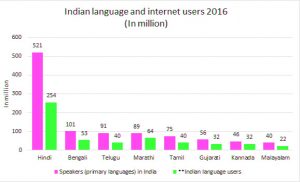
Source: KPMG in India’s analysis, April 2017
*These 8 languages have been considered as Indian languages for the purpose of this report
** Indian languages users are Indian language literates who prefer their primary language over English to read, write and converse with each other
There were 110 million internet users in 2011 in India. Majority of internet users (62%) were using internet in the English language, there were only 38 per cent internet users using internet in different Indian languages. In the year 2016, the picture had changed, a number of internet users have grown to 409 million from 110 million in 2011. Internet users using internet in Indian languages subsequently grown to 57 per cent (234 million).
As per the report, Internet penetration in India expected to grow 52 per cent by 2021 and the number of internet users would be around 735 million. Out of total internet users in 2021, 73 per cent would be using it in Indian languages.
The Fintech outlook looks positive for the coming year
Based on its sustained growth over the past year, the fintech industry could experience even greater growth moving into the coming year. Financial technology targets a number of areas within the financial industry, including payments and wealth management.
How Technology Is Disrupting the Insurance Industry
Technology hasn’t slowed down to wait for the outdated insurance industry to catch up. Everything from self-driving cars, big data, and sharing economy platforms have tremendous potential to disrupt the industry, and we’re seeing the growing pains manifest already.




